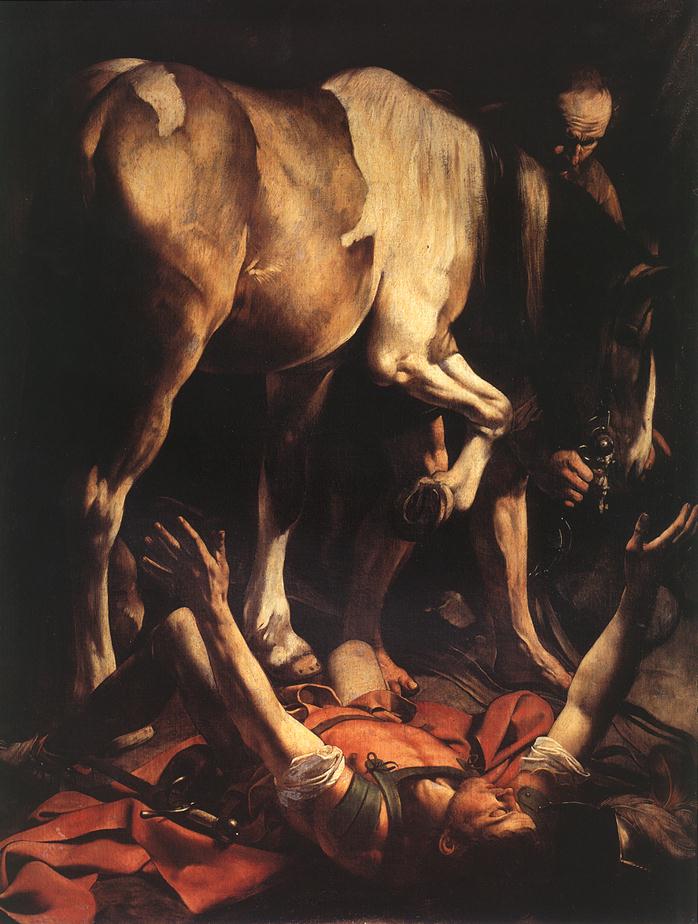Caravaggio, Conversion of Saul (S.M. del Popolo)

The following description is from
Web
Gallery of Art,
“Caravaggio The Conversion on the Way to Damascus 1600 In 1600, soon after he had completed the first two canvases for the Contarelli Chapel, Caravaggio signed a contract to paint two pictures for the Cerasi Chapel in Santa Maria del Popolo. The church has a special interest because of the works it contains by four of the finest artists ever to work in Rome: Raphael, Carracci, Caravaggio and Bernini. It is probable that by the time Caravaggio began to paint for one of its chapels, The Assumption by Annibale Carracci was in place above the altar. Caravaggio’s depictions of key events in the lives of the founders of the Roman See have little in common with the brilliant colours and stylized attitudes of Annibale, and Caravaggio seems by far the more modern artist. Of the two pictures in the chapel the more remarkable is the representation of the moment of St Paul’s conversion. According to the Acts of the Apostles, on the way to Damascus Saul the Pharisee (soon to be Paul the Apostle) fell to the ground when he heard the voice of Christ saying to him, ‘Saul, Saul, why do you persecute me?’ and temporarily lost his sight. It was reasonable to assume that Saul had fallen from a horse. Caravaggio is close to the Bible. The horse is there and, to hold him, a groom, but the drama is internalized within the mind of Saul. He lies on the ground stunned, his eyes closed as if dazzled by the brightness of God’s light that streams down the white part of the skewbald horse, but that the light is heavenly is clear only to the believer, for Saul has no halo. In the spirit of Luke, who was at the time considered the author of Acts, Caravaggio makes religious experience look natural. Technically the picture has defects. The horse, based on D'rer, looks hemmed in, there is too much happening at the composition’s base, too many feet cramped together, let alone Saul’s splayed hands and discarded sword. Bellori’s view that the scene is ‘entirely without action’ misses the point. Like a composer who values silence, Caravaggio respects stillness. Both this and the following painting appear to be second versions, for Baglione states that Caravaggio first executed the two pictures ‘in another manner, but as they did not please the patron, Cardinal Sannesio took them for himself’. Of these earlier versions, only The Conversion of St Paul survives.”
